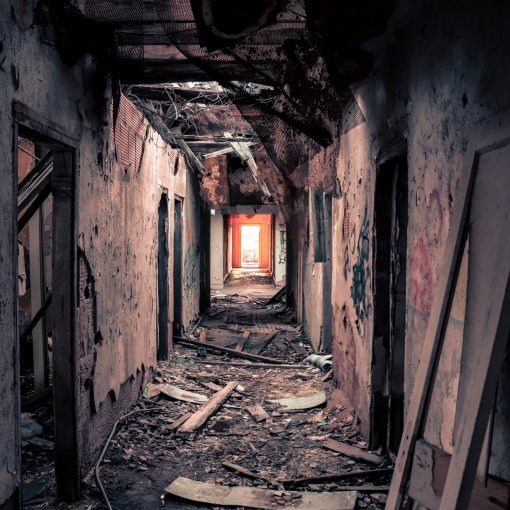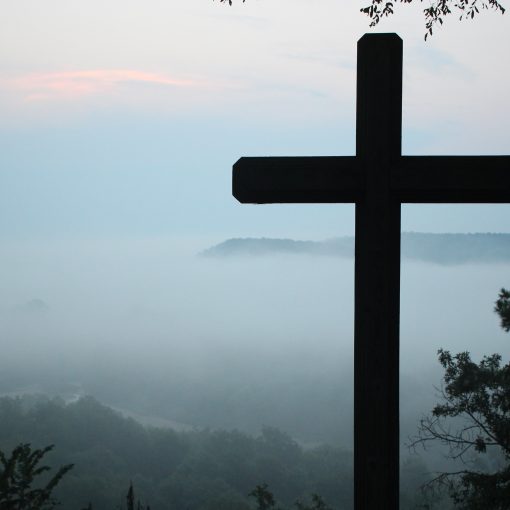As usual, all of the posts in this series are collected here.
A couple of notes: This post supersedes a couple of previous posts in the series. In particular, this covers the salvific events of the campaign world and its messianic figures, and it also removes Oath of Vengeance as an option for PC paladins. I tend to interpret Oath of Vengeance as Frank “The Punisher” Castle by way of Anton Chigurh (from No Country For Old Men), and it’s just too vicious and brutal to make sense as something The Church would train or endorse. This post also changes the list of cleric domains available slightly.
I also tried to come up with something that had a Christian “feel,” with messianic figures, obvious divine concern for the lowly and rejected, and a Pentecost analog, but that also wasn’t a direct analogy or re-skinning. I am not C.S. Lewis and I recognize my limits. Hopefully I did okay.
-Peter
Grace and Mercy to The Needy
As mentioned earlier in this series, the cleric and paladin classes are ancient, but not as old as some of the other classes in the world, dating back about 6500 years. The Church itself is much older still, going back tens of thousands. So where did the clerics and paladins come from?
For millennia after The Fall of The Adversary, he and his minions waged war upon creation, attacking the faithful in body and soul. Fiends and their minions sought to corrupt or, failing that, simply murder anyone loyal to God, and that conflict raged for a long time. People fought valiantly, but casualties were high and several thousand years ago, God sent a pair of twins to live among the mortals, fulfilling thousands of years of prophecy and tipping the balance of the cosmic struggle in dramatic fashion. The children of a tiefling prostitute and a half-orc thief, they were also the first aasimar, and the first to be redeemed by their ministry were their own parents.
Grace was a teacher, and she spoke of God’s love and willingness to forgive. She stressed the importance of knowledge and wisdom, and spoke of the ultimate justice and fairness of God. Mercy was a protector and a healer. He stood against violence against the innocent and stressed the value of charity and redemption through word and deed. Both were deeply compassionate and spent a lot of their ministry healing the wounded, the sick, and the afflicted. In the end, both were captured and burned at the stake, betrayed by a community of the faithful who had believed them to be false prophets. About a week after their execution, both were observed standing on the pile of ashes that had been the site of their deaths. They pronounced forgiveness and love upon those that had slain them, embracing their executioners, and those same executioners who had lit the blaze fell to their knees in repentance, becoming the first two clerics.
About a week later, across the realm, holy power settled upon those who had followed Grace and Mercy, and as the years passed, more specialized forms of divine magic appeared as saints and martyrs sought to follow God in their own specialized ways. Paladins arose out of a tradition of clerics also trained as soldiers to protect churches and communities from monsters of all kinds. Now, several thousand years on, there are a number of holy orders within the church, each with their own areas of specialization.
Below is a list of the various groups that make up The Church and the class archetypes associated with each.
The Mother Church
Cleric Domains: Life, Light, Knowledge
Paladin Oaths: Devotion, Redemption
Symbol: Lit torch with a crossguard like that of a sword directly beneath the burning head, the head surrounded by a halo of light.
The Mother Church is the main body of the Church and is devoted to no particular saint. These are the clerics, priests, and laity you will find doing the lion’s share of good works in most of the world. They operate local churches, perform weddings and funerals, teach up others in God’s ways and generally try to do as much good as possible. Most of the people who serve the Mother Church (or just The Church) don’t have any magical abilities at all, but the ones that do are are very “standard” holy types – healers and scholars devoted to the protection, redemption, and growth of all those around them. Vestments are very similar to modern Christian clerical garb – the black shirt, white collar seen on priests and pastors in our world is the normal identifier of ordained persons.
The Militant Order of St. Kylah the Vigilant
Cleric Domains: Tempest, War, Retribution (Compendium of Sacred Mysteries)
Paladin Oaths: Devotion, Resolve (Gunpowder Codex), Thunder (Midgard Heroes’ Handbook)
Rogue Archetype: Divine Herald (Xanathar’s Lost Notes to Everything Else)
Symbol: A sword, point-down with a stylized lightning bolt behind it.
Singular and plural nomenclature: Kylan, Kylans
St. Kylah was a literal fiend hunter, and her order seeks to emulate her example, going out into the world to fight the forces of The Adversary on their own turf. They are the most militant of the holy orders and are therefore watched the closest by The Church, but to their credit, this also means they watch themselves closely. Their goal is the safety of the innocent and the redeemable, not the extermination of any trace of evil from the world by violent means, which makes them very practical and far less accusatory and xenophobic than a lot of stereotypical fantasy crusaders. If a threat can be neutralized without violence, so much the better. They concern themselves mostly with aberrations, fiends, and the occasional dragon, but will fight others who threaten innocent lives. If violence is necessary, they are very, very good at it. Kylah herself was a dwarf, and the order is popular among dwarves, who, thanks to strong clan ties, find its protective aspect to be very appealing.
The Monastic Order of St. Lessara the Steward
Cleric Domains: Nature, Life, Ocean (Midgard Heroes’ Handbook)
Paladin Oaths: Ancients, Redemption
Symbol: A tree with a halo of light shining from behind its branches.
Singular and plural nomenclature: Lessaran, Lessarans
St. Lessara was an elven cleric who saw the beauty of God expressed in the natural world and sought to teach others to preserve that beauty and live in harmony with it. The order maintains a number of monasteries in areas of pristine natural beauty where its clerics and paladins learn their respective trades, but they are most often seen in civilized areas where they work hand-in-hand with local authorities to promote the responsible use of natural resources and work against damage to the environment. They enjoy good relations with benevolent fey and druidic orders as a sort of general rule and will happily work with them to preserve Creation from those who would despoil it. They strongly prefer nonviolent solutions to conflict but can be surprisingly dangerous if pressed.
The Solemn Order of St. Argan the Reverent
Cleric Domains: Life, Light, Grave (Xanathar’s Guide to Everything)
Paladin Oaths: Devotion, Grave (Dark Arts Player’s Companion), Radiance (Midgard Heroes’ Handbook)
Symbol: A white rose with a black stem.
Singular and plural nomenclature: Arganite, Arganites
St. Argan was an early human cleric and one of the first to confront the scourge of the undead that arose out of The Adversary’s attempts to counterfeit the resurrection magic of God’s clerics. They perform funeral rites, keep undead at bay, and maintain catacombs and cemeteries for the faithful. Their zealous hatred of all undead as depicted in the source material is tempered somewhat by the knowledge that even the unliving can sometimes be redeemed, but they typically will not bet that way. Argan’s teachings deal heavily with concerns of mortality and death, and Arganites are encouraged to make the most of this life so that when they die, it can be with few regrets. They discourage, but do not forbid, the use of resurrection magic, believing the dead should rest.
The Holy Order of St. Azar the Learned
Cleric Domains: Knowledge, Arcana, Fate (Compendium of Sacred Mysteries)
Arcane Tradition: Theurgy (Unearthed Arcana) – note that Theurgists may choose from the domains offered by The Mother Church as well as the order of St. Azar.
Symbol: An open book with a simple black-and white line art symbol of The Mother Church across its pages.
Singular and plural nomenclature: Azarian, Azarians
St. Azar was a centaur wizard of singular skill and devotion. He desired to see the hand of God in the workings of magic and through the study of creation, particularly history and astronomy, and also sought to understand God’s will as revealed in prophecy. His order maintains libraries and wizard schools and a number can be found in the Palace of the Seers. Unlike a lot of the other holy orders, they do not maintain separate facilities, working instead out of church archives and traveling the world in search of more knowledge. They also operate public libraries and teach at universities, seeing the spread of knowledge as holy and good in its own right.
The Benevolent Order of St. Iri the Subtle
Cleric Domain: Trickery, Love (Compendium of Sacred Mysteries)
Paladin Oath: Redemption
Rogue Archetype: Divine Herald (Xanathar’s Lost Notes to Everything Else)
Symbol: A white key on a black field
Singular and plural nomenclature: Irian, Irians
St. Iri was a poor tiefling orphan who eventually became a cleric. She had a hard early life and never forgot it, spending much of her time as a cleric ministering to the poor and outcast. Dedicated to reaching those most in need or, but often least receptive to, God’s message, Irians operate orphanages and soup kitchens, infiltrate criminal gangs, and set up shop in poor neighborhoods. They are unconcerned with appearances and normally don’t even wear clerical garb, preferring instead to dress in a manner that helps them fit in with those they are serving. They also do significant covert work against the slaving efforts of various Grim Cities. Humble and dedicated, they draw many of their number from the ranks of those they once served.
The Compassionate Order of St. Gertiana the Hopeful
Cleric Domains: Peace, Life, Love (Compendium of Sacred Mysteries)
Symbol: A roll of bandages with a sprig of blightbane (a powerful healing herb) laid across it
Singular and plural nomenclature: Gertianan, Gertianans
St. Gertiana was a singularly kind and gentle half-orc who worked as a nurse and midwife in the pre-clerical era and became one of the first clerics. She was renowned for her compassion and her willingness to heal anyone, even those who had wronged her and her loved ones. Unlike most of the other orders, Gertians do not maintain entire separate facilities, instead serving in clinics and hospitals almost exclusively. Members of the order also train extensively in non-magical medicine and crisis de-escalation, and most are pacifists. Even those who aren’t are extremely non-violent people. The order also trains special triage nurses who can evaluate what can be treated with normal medicine and what needs the magical touch of a cleric, and they can be found in medical schools all over the world.
The Inspired Order of St. Basdav the Prodigy
Cleric Domains: Forge, Desert (Compendium of Sacred Mysteries), Dust (Gunpowder Codex), Clockwork (Midgard Heroes’ Handbook)
Paladin Oaths: Resolve (Gunpowder Codex)
Symbol: A smithing hammer over a large gear.
Singular and plural nomenclature: Basdavite, Basdavites
St. Badav was a desert-dwelling gnome member of the order of St. Azar and a brilliant engineer. He is credited with the construction of a series of canals and aqueducts that brought water to a number of desert communities, but that sort of civil engineering was far from his only area of interest. He created constructs, impressive clockwork machines that told time accurately, operated bridges, and even the prototypes for the first engines during his life. One of the newest of the holy orders, his order believes in bettering the lot of people through the responsible use of technology and engineering, particularly those in harsh environments. There is also a fierce, martial aspect to them. Basdav himself was an excellent marksman and used that talent to defend the communities he provided water to from a variety of vicious desert monsters. They maintain monasteries in desert locations that are one part typical monastery and three parts R&D lab.
The Equitable Order of St. Onaria the Just
Cleric Domains: Knowledge, Justice (Midgard Heroes’s Handbook), Order (Unearthed Arcana)
Paladin Oaths: Devotion
Rogue Archetypes: Divine Herald (Xanathar’s Lost Notes to Everything Else)
Symbol: White scales against the black silhouette of a raven in flight
Singular and plural nomenclature: Onarian, Onarians
St. Onaria was a kenku cleric known for her wisdom, fairness, and sense of justice in life. Her order functions as the ecclisiarchal police force and court system of The Church, and they hold The Church to a high standard. They maintain the law libraries of church conduct, investigate charges of corruption or abuse among clergy, and mediate disputes among aggrieved parties. They police themselves even more vigilantly than the rest of the church and enjoy a strong reputation for being wise, incorruptable, and fair. Their model of justice is restorative rather than punitive, but they will not hesitate to defrock a priest or cleric abusing their power or parishoners, and clergy accused of crimes in areas that are not ruled by malevolent forces will be turned over to civil authorities after an ecclesiarchal investigation. They have no patience for cruel or unjust laws, however, and will not lift a finger to preserve the safety or property of a Grim City’s ruling class.
Conclusion
That’s it for this one. I may have some play reports from this setting soon – I’ve managed to put together a game. Our first session is coming up soon. As always I welcome any thoughts or feedback you might have.




